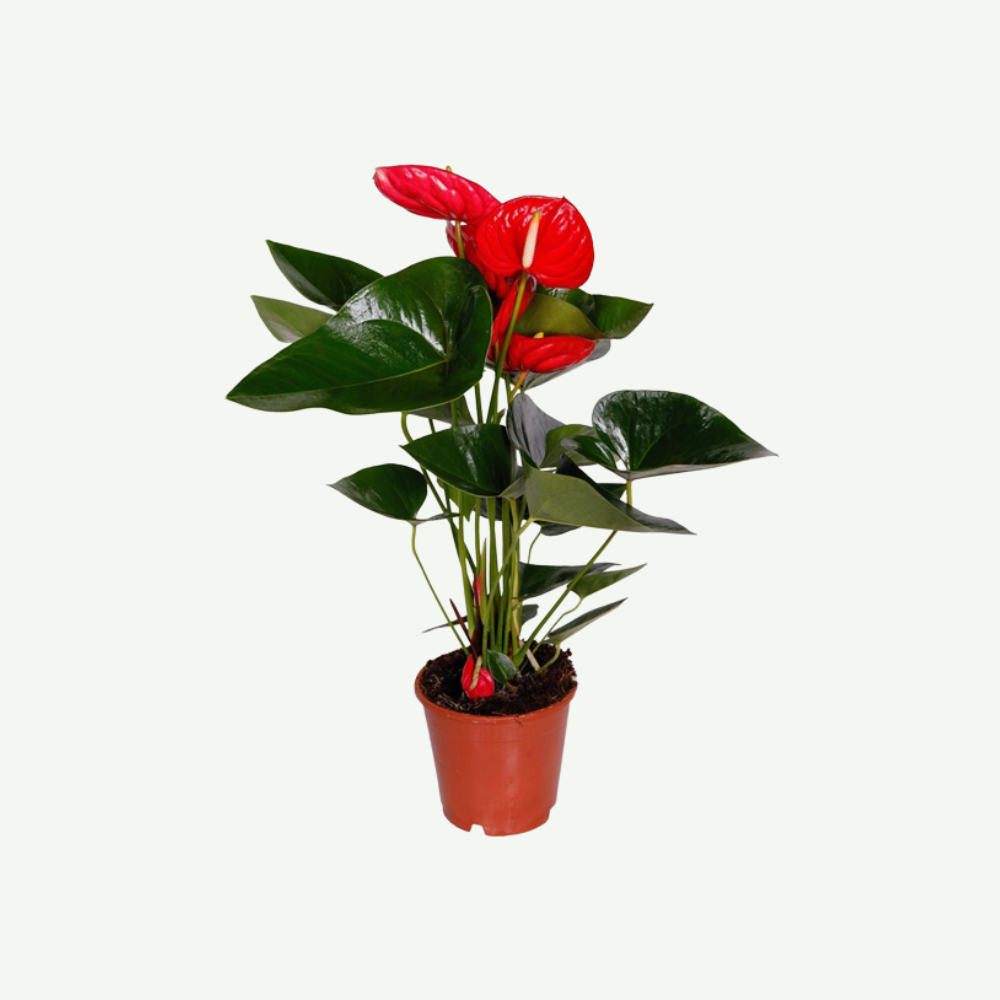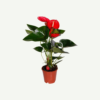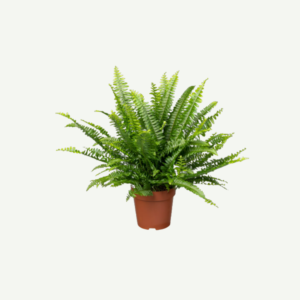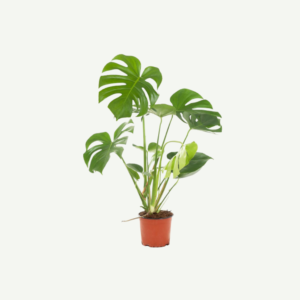Anthurium, scientifically known as Anthurium andraeanum, is a stunning and popular tropical houseplant from the Araceae family. Native to the rainforests of Central and South America, the Anthurium is cherished for its striking, heart-shaped flowers and glossy, dark green leaves. It is often called the Flamingo Flower or Painter’s Palette due to the colorful bracts (modified leaves) that resemble vibrant flowers.
Care of Anthurium :
Light Requirements: These plants thrives in bright, indirect light. Avoid direct sunlight, as it can scorch the leaves. Place it near a window with filtered sunlight or use sheer curtains to protect it from excessive sun exposure.
Temperature and Humidity: Maintain a temperature range between 65-80°F (18-27°C) to keep your plants healthy. These plants love high humidity levels, so consider using a humidity tray, room humidifier, or misting the leaves regularly.
Watering: These plants prefers consistently moist, but not waterlogged, soil. Water thoroughly when the top inch of soil feels dry, and ensure proper drainage to prevent root rot. Reduce watering in the winter months.
Soil and Potting: Use a well-draining potting mix to allow excess water to escape easily. Repot your plant every 2-3 years, typically in spring, to provide more space for growth.
Fertilization: Feed your plant with a balanced, water-soluble fertilizer during the growing season (spring and summer) to encourage healthy foliage and flowering. Follow the recommended dosage on the fertilizer label.
Pruning: Prune yellowing or dead leaves and faded flowers to maintain the plant’s appearance and health.
Chractaristics of Anthurium:
Glossy Leaves: These plants have glossy, dark green leaves that are typically lance-shaped or arrowhead-shaped. The leaves can vary in size and may have prominent veining.
Long-Lasting Blooms: This plant flowers are long-lasting, and they can remain in bloom for several weeks or even months, making them a popular choice for cut flower arrangements.
Tropical Origin: They are native to tropical regions of Central and South America. They thrive in warm, humid climates and are often grown as houseplants in other regions.
Low-Maintenance: They are relatively easy to care for and are forgiving of occasional neglect. They prefer bright, indirect light and regular watering but can tolerate lower light levels and some drying out between waterings.
Air-Purifying Qualities: They are known for their air-purifying abilities. They can help remove indoor air pollutants, making them a popular choice for improving indoor air quality.
Indoor or Outdoor Growth: They are typically grown as houseplants, but they can also thrive in certain outdoor settings in tropical or subtropical regions. When grown outdoors, they are often used in garden beds, borders, or as container plants.
Variety of Cultivars: There are numerous Anthurium cultivars, each with its own unique characteristics, such as flower color, leaf shape, and size. This diversity provides a range of options for indoor or outdoor gardening.
Moderate Size: Depending on the species and cultivar, Anthuriums typically grow to a manageable size for indoor settings, making them suitable for homes and offices.
Potential Blooms Year-Round: Under the right conditions, Anthuriums can produce blooms throughout the year, adding a continuous splash of color to your indoor or outdoor spaces.
Toxicity: While Anthuriums are prized for their beauty, they are toxic when ingested, and their sap can irritate the skin and eyes. Keep them out of reach of children and pets and handle them with care.
Stress Reduction:The vibrant and unique appearance of Anthurium can have a soothing effect, reducing stress and promoting a sense of well-being.
Anthurium PropagationLearn how to propagate Anthurium through division or stem cuttings and expand your collection of these beautiful tropical plants.
Landscape use of Anthurium:
Shaded Garden Beds: Plant Anthuriums in shaded or partially shaded garden beds. Their elegant, long-lasting flowers and glossy leaves can add a touch of tropical charm to shaded garden areas.
Understory Plants: In gardens with taller trees or shrubs, Anthuriums can thrive as understory plants. They adapt well to filtered light conditions beneath taller vegetation, contributing to the lush and exotic feel of the garden.
Container Gardens: Grow these plants in large pots or decorative containers to place on patios, decks, or in courtyard gardens. Their eye-catching flowers and glossy foliage make them an attractive focal point in outdoor living spaces.
Accent Plants: Use these plants as accent plants in garden beds, along walkways, or near water features. Their unique and elegant flowers can draw attention and add a touch of beauty to the landscape.
Vertical Gardens: Incorporate this plant into vertical garden structures, such as trellises or living walls. Their exotic appearance and distinctive blooms can contribute to a lush and visually appealing vertical garden design.
Moonlight Gardens: This plant can be part of moonlight gardens designed to be enjoyed in the evening when their flowers are most prominent. Combine them with other white or light-colored flowers and fragrant plants for a tranquil, aromatic night garden.
Tropical Garden Themes: If you’re creating a tropical garden, these plants are a natural choice. Combine them with other tropical plants like palms, ferns, and bromeliads to establish a lush and exotic garden atmosphere.
Educational Gardens: This plant can be used in botanical gardens, public parks, or educational institutions to educate visitors about tropical plant species and showcase their unique features.
Visit our website for more indoor and outdoor plants








